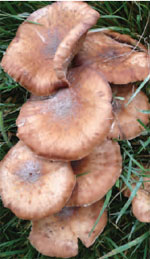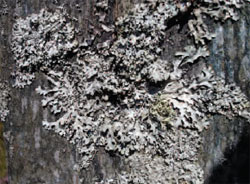Non-plant kingdoms
Content
Fungi Some fungi are single celled (such as yeasts) but others are multicellular, such as the moulds and the more familiar mushrooms and toadstools. Most are made up of a mycelium, which is a mass of thread-like filaments (hyphae). Their cell walls are made of chitin. Their energy and supply of organic molecules are obtained from other organisms (heterotrophic nutrition). They achieve this by secreting digestive enzymes on to their food source and absorbing the soluble products. They obtain their food directly from other living organisms, possibly causing disease, or from dead organic matter, so contributing to its breakdown in the soil.
The animal kingdom includes a very large number of species that have a significant influence on horticulture mainly as pests or as contributors to the recycling of organic matter. Some of the most familiar animals are in the phylum Chordata that includes mammals, birds, fish, reptiles and amphibians. Mammal pest species include moles, rabbits, deer, rats and mice. Bird pest species are numerous including pigeons and bullfinches, but there are very many that are beneficial in that they feed harmful organisms such as tits that eat greenfly. Less familiar are important members of the phylum Nematoda (the round worms) that includes a very large number of plant disease causing organisms including Stem and Bulb Eelworm, Root Knot Eelworm, Chrysanthemum Eelworm and Potato Root Eelworm. Phylum Arthropoda are the most numerous animals on earth and include insects, centipedes, millipedes and spiders; many of these are dealt with in the topic on plant pests, but it should be noted that there are many that are beneficial e.g. honey bees and centipedes, which are carnivorous and many live on insect species that are harmful. Phylum Annelida (the segmented worms) includes earthworms, which are generally considered to be useful organisms especially when they are helping to decompose organic matter or improving soil structure, but some species cause problems in fine turf when they produce worm casts. Phylum Mollusca is best known for the major pests: slugs and snails. Bacteria Bacteria are single-celled organisms sometimes arranged in chains or groups (colonial). They are autotrophic (can produce their own energy supply and organic molecules); some photosynthesize, but others are able to make organic molecules using the energy released from chemical reactions usually involving simple inorganic compounds. They have great importance to horticulture by their beneficial activities in the soil, and as causative organisms of plant diseases. Algae and lichens The algae, comprising some 18000 species, are true plants, since they use chlorophyll to photosynthesize. The division Chlorophyta (green algae) contains single-celled organisms that require water for reproduction and can present problems when blocking irrigation lines and clogging water tanks. Marine algal species in Phaeophyta (brown algae) and Rhodophyta (red algae) are multicellular, and have leaf-like structures. They include the seaweeds, which accumulate mineral nutrients, and are therefore a useful source of compound fertilizer as a liquid feed. (The blue-green algae, which can cause problems in water because they produce unsightly blooms but are also toxic, have been renamed cyano-bacteria and placed in Kingdom Prokaryotae.)
Classification is complex, since each lichen consists of both fungal and algal parts. Both organisms are mutually beneficial or symbiotic. The significance of lichens to horticulture is not great. Of the 15000 species, one species is considered a food delicacy in Japan. However, lichens growing on tree bark or walls are very sensitive to atmospheric pollution, particularly to the sulphur dioxide content of the air. Different lichen species can withstand varying levels of sulphur dioxide, and a survey of lichen species can be used to indicate levels of atmospheric pollution in a particular area. Many contribute to development. Lichens are also used as a natural dye, and can form an important part of the diet of some deer. |
|||||||||||||||||||||||||






